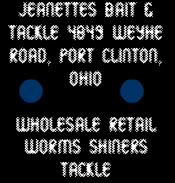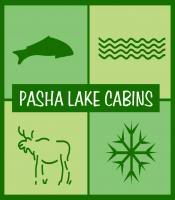PLANER BOARD BASICS
Page 1 of 1
 PLANER BOARD BASICS
PLANER BOARD BASICS
I put this article together for another forum where I post and figured there may be someone who could use it here too.Most of you old dogs will probably get a chuckle out of this but if you can add thoughts and critique,it would be appreciated. PLEASE READ ON AFTER ENDING FOR PART 2!!!
Thanks for the time and the great article on dipsys Workdog.You asked for a board article and I will try to do my best as to tell what we do,which is probably all wrong,but it does work for us.If anybody has thoughts for input please tag-on and post,it can only benefit all of us.You will see in our tackle we have not stepped to the plate for high dollar stuff and I was skeptical buying what we did,but they have performed well for what we have.Also I will list some of the compromised things we did and do as we evolved in learning and tackle.
The clearing waters of Lake Erie have brought about a need to approach the fish on a stealthy aspect.Hence the planer board and its ability to put the lures away from the boat.With the clear waters shallow suspended walleye will be "invisible" to your electronics as they scatter away from the path of your vessel and lures properly placed will pick up on these fish.
Planer boards come in a number of designs.Large ski type boards,single in-line,wood,plastic,foam,lighted,adjustable ballast,with rattles and tell tale flags and a number of release clips are utilized in construction .If you were to ask a dozen fisherpeople what board they use you might get as many different answers.Planer boards are designed to increase the width of a trolling spread by taking the lines off to the sides of the boat. This allows you to fish multiple baits with less likelihood of tangling, and increases the chances of bites from boat-wary fish. You can also drag baits into shallow areas without putting the boat at risk.The shallower water of the West Basin are better suited for the in-lines and the larger ski-type boards are more appropriate for the deeper diving stuff needed for the Central Basin.
THE TACKLE
I guess the first thing is reel selection which at best are linecounting level winds,these are actually fairly inexpensive in comparison to some good casters,we have used Diawa's SG27lc with good success over four years of weekly use and one failure,a stripped spool to engaging plate due to a solid hookup while engaging from freewheel.You can always use level winds and count out the wraps and I have even used spinning tackle by devising a measure such as the amount stripped to the first guide and count them off.
Rods designed for in-lines or boards are out there and you will see a hundred different people use 80 different rod types the best advice I think I can give is to keep them matched as well as the reel.We have used Diawa Heartland Downrigger rods with good success and they have enough spring for rough water and enough backbone to handle larger fish,get too stiff a rod and it will pull the in-lines out of the water.
Next would be line and you know as well as I do that twenty people will suggest ten different lines as in each category of equipment necessary as well,we use Berkley Ironsilk at 20lb.Many use the superbraids some just use conventional line,stretch is the main concern and for us with the Ironsilk it seems to be acceptable as well as abrasion resistance and memory.Fill the spool to the manufactures recommendation and go out and strip off a measured hundred or two and see what the difference is.You might be surprised at the variances and you can mark reels with the correction factor. BTW we remove about 6 feet off the end of our line every 20 or so hours along with a feel for abrasion on each outing or bottom contact and cut any affected.You need to keep the amount of line on the spools as close together to each other as possible,to keep the counts as accurate as they can be.
For leaders we use a ball bearing swivel to attach to the line and 6 foot leaders of 17-20lb floroclear with a number 2 duolock at the terminal end.Once again leader materials will vary from the more expensive florocarbon,real McCoy,on down to some out of the box leftover line from spooling,in a pinch.
Rod holders will be necessary and there are many available.We,in the past,ran heavy constructed plastic,they do break if struck with something,never had one break from strain with dipsys and almost lost is all we have experienced but all I saw of my brother,who broke that one,was the soles of his shoes before he came back up with the rod.Lanyards to the reels are good insurance but cumbersome when pulling fish.We will be making the metal conversion soon on our new vessel.
THE BOARDS
IN-LINE
After a pro event win on Lake Erie,using an at the time unorthodox method of pulling in-line boards they have become a common sight with the open water crowd.They have more of a surging effect on the lure when encountering wave action and will work relatively well until the waves start to curl or break.You can navigate relatively tight turns with the in-lines and properly ballasted units will stay upright and in track if stop and go boat action brings the strike.They are easier to store in a smaller vessel and don't require extra equipment to use.We will pull 30 jets with our in-lines but they squat down at the tail pretty hard a board with adjustable ballast or adding ballast forward will help when dragging high drag tackle such as dipsys,discs,deep cranks and the like.
Some in-line boards.
 ,
,
 ,
,
 ,
,
When setting up the in-line boards let your lure run out to the distance to get to the desired dive depth,this is where the two bibles of trolling come into play.Precision Trolling and the Big Water Edition are the titles and are a strongly recommended resource in my opinion.They show dive curves for all the popular lures,weighting systems,lead core and diving devices with compensating charts for conditions and tackle that vary from their findings.The numbers seem to be very close and sometimes interesting.
 ,
,

Stop the reel and attach the board,we use Off-shores with the OR16 clips which are red in color,they have a post in the center of the pad to keep the line from slipping completely off the release and a little more tension,the black clips that the boards are shipped with don't have the pin.I think it is easiest to attach the rear release first then the front,leaving around three inches of slack between the two.With the super lines you should loop the line around the release to create a 360 degree loop around the pad and draw snug to eliminate slippage.At first this is an awkward experience but with time it will become mechanical.Then play out the line to offset the board from the boat and set rod in the rod holder.
When retrieving a fish the biggest thing to learn is to get the right amount of line from the rod tip to the board so that you can lift the tip to maintain pressure on the fish but have the board swing into your free hand to squeeze the release.I found that when squeezing the last release drawing the line towards you will keep the board away from the gunnel and an accident.I have also watched many people just let the line snap after removing the board,we extend with the line as far as possible to eliminate that snap and momentary loss of pressure.
Thanks for the time and the great article on dipsys Workdog.You asked for a board article and I will try to do my best as to tell what we do,which is probably all wrong,but it does work for us.If anybody has thoughts for input please tag-on and post,it can only benefit all of us.You will see in our tackle we have not stepped to the plate for high dollar stuff and I was skeptical buying what we did,but they have performed well for what we have.Also I will list some of the compromised things we did and do as we evolved in learning and tackle.
The clearing waters of Lake Erie have brought about a need to approach the fish on a stealthy aspect.Hence the planer board and its ability to put the lures away from the boat.With the clear waters shallow suspended walleye will be "invisible" to your electronics as they scatter away from the path of your vessel and lures properly placed will pick up on these fish.
Planer boards come in a number of designs.Large ski type boards,single in-line,wood,plastic,foam,lighted,adjustable ballast,with rattles and tell tale flags and a number of release clips are utilized in construction .If you were to ask a dozen fisherpeople what board they use you might get as many different answers.Planer boards are designed to increase the width of a trolling spread by taking the lines off to the sides of the boat. This allows you to fish multiple baits with less likelihood of tangling, and increases the chances of bites from boat-wary fish. You can also drag baits into shallow areas without putting the boat at risk.The shallower water of the West Basin are better suited for the in-lines and the larger ski-type boards are more appropriate for the deeper diving stuff needed for the Central Basin.
THE TACKLE
I guess the first thing is reel selection which at best are linecounting level winds,these are actually fairly inexpensive in comparison to some good casters,we have used Diawa's SG27lc with good success over four years of weekly use and one failure,a stripped spool to engaging plate due to a solid hookup while engaging from freewheel.You can always use level winds and count out the wraps and I have even used spinning tackle by devising a measure such as the amount stripped to the first guide and count them off.
Rods designed for in-lines or boards are out there and you will see a hundred different people use 80 different rod types the best advice I think I can give is to keep them matched as well as the reel.We have used Diawa Heartland Downrigger rods with good success and they have enough spring for rough water and enough backbone to handle larger fish,get too stiff a rod and it will pull the in-lines out of the water.
Next would be line and you know as well as I do that twenty people will suggest ten different lines as in each category of equipment necessary as well,we use Berkley Ironsilk at 20lb.Many use the superbraids some just use conventional line,stretch is the main concern and for us with the Ironsilk it seems to be acceptable as well as abrasion resistance and memory.Fill the spool to the manufactures recommendation and go out and strip off a measured hundred or two and see what the difference is.You might be surprised at the variances and you can mark reels with the correction factor. BTW we remove about 6 feet off the end of our line every 20 or so hours along with a feel for abrasion on each outing or bottom contact and cut any affected.You need to keep the amount of line on the spools as close together to each other as possible,to keep the counts as accurate as they can be.
For leaders we use a ball bearing swivel to attach to the line and 6 foot leaders of 17-20lb floroclear with a number 2 duolock at the terminal end.Once again leader materials will vary from the more expensive florocarbon,real McCoy,on down to some out of the box leftover line from spooling,in a pinch.
Rod holders will be necessary and there are many available.We,in the past,ran heavy constructed plastic,they do break if struck with something,never had one break from strain with dipsys and almost lost is all we have experienced but all I saw of my brother,who broke that one,was the soles of his shoes before he came back up with the rod.Lanyards to the reels are good insurance but cumbersome when pulling fish.We will be making the metal conversion soon on our new vessel.
THE BOARDS
IN-LINE
After a pro event win on Lake Erie,using an at the time unorthodox method of pulling in-line boards they have become a common sight with the open water crowd.They have more of a surging effect on the lure when encountering wave action and will work relatively well until the waves start to curl or break.You can navigate relatively tight turns with the in-lines and properly ballasted units will stay upright and in track if stop and go boat action brings the strike.They are easier to store in a smaller vessel and don't require extra equipment to use.We will pull 30 jets with our in-lines but they squat down at the tail pretty hard a board with adjustable ballast or adding ballast forward will help when dragging high drag tackle such as dipsys,discs,deep cranks and the like.
Some in-line boards.
 ,
,
 ,
,
 ,
,
When setting up the in-line boards let your lure run out to the distance to get to the desired dive depth,this is where the two bibles of trolling come into play.Precision Trolling and the Big Water Edition are the titles and are a strongly recommended resource in my opinion.They show dive curves for all the popular lures,weighting systems,lead core and diving devices with compensating charts for conditions and tackle that vary from their findings.The numbers seem to be very close and sometimes interesting.
 ,
,

Stop the reel and attach the board,we use Off-shores with the OR16 clips which are red in color,they have a post in the center of the pad to keep the line from slipping completely off the release and a little more tension,the black clips that the boards are shipped with don't have the pin.I think it is easiest to attach the rear release first then the front,leaving around three inches of slack between the two.With the super lines you should loop the line around the release to create a 360 degree loop around the pad and draw snug to eliminate slippage.At first this is an awkward experience but with time it will become mechanical.Then play out the line to offset the board from the boat and set rod in the rod holder.
When retrieving a fish the biggest thing to learn is to get the right amount of line from the rod tip to the board so that you can lift the tip to maintain pressure on the fish but have the board swing into your free hand to squeeze the release.I found that when squeezing the last release drawing the line towards you will keep the board away from the gunnel and an accident.I have also watched many people just let the line snap after removing the board,we extend with the line as far as possible to eliminate that snap and momentary loss of pressure.
Last edited by OhioFisher on Mon Sep 22, 2008 7:35 pm; edited 1 time in total

OhioFisher- Administrator

 Part 2
Part 2
IN-LINE ACCESSORIES
There are some things you can do with your in-lines that can help certain situations.Night fishing is an addiction of ours and seeing the board was a need for us,I drill a hole of the appropriate diameter to accept a thill LED bobber light,some use light sticks and there are some manufacture offered lights as well.We use the tell-tale flag conversions but they are finicky and sometimes harder to read than you would think.When pulling deep running cranks and 30 jets with our Off-shores we added another hole to stretch the spring and still had to add more tension by shortening the spring to try and keep the flag usable even then it is common to see them at 45 degrees.
 ,
, ,
,
 ,
, ,
,
LARGE SKI TYPE BOARDS
 ,
,
The larger ski type boards require a larger vessel to provide an attachment point high enough to keep the tow line from digging in so a mast,rail or cabin mounted reels are usually utilized.They also will require release clips to run down the "towline" for line attachment.We did drag big boards off our little boat with attaching tow lines to the bimini frame and have been able to get a pretty wide spread before the tow line would dig in but it was a compromised situation.The big boards allow more lines per side,are better suited to larger jets,will work with small dipsys and will track in rougher water better than an in-line but your turning radius is increased and the surging effect that the small in-lines impart on the bait is lost to some extent.If a big board dives it can be a little trickier to get it back on "plane".
Mastercraft makes a wooden board that breaks down for stowage and is probably the most convenient on a smaller watercraft,good construction and materials throughout.
TOWLINE ATTACHMENT
The trick when mounting a deck plate for a planer board mast is to get it as far forward as possible The standard height for dual board masts is 4 to 6 feet and it is height that determines how far out to the side the boards can run without the towline drooping into the water. The higher and farther forward the mast, the better.A tall vessel can use rail mounted spools for the towlines and we have even used a line with snap swivels at each end for attachment with no spool for adjustment.Manual spools are cheaper but electric masts can make things a little easier.
 ,
, ,
,
THE SPREAD
By spreading the lures away from the boat not only targets fleeing fish,it also frees up the transom area for netting.If you run the shallowest running lures outside and a little set back from the inboard line adjacent to it,when a fish hooks up it will usually rise up in the water column,go over the inboard lines it crosses and allow playing fish back up the middle without tangle.The rods closer to the boat have less set-back and deeper running lures,try to keep the offsets even,as a fish will suck down the offering and the board will begin to "pull back" out of formation making it easier to "read" a hook-up.The rods closest to the bow should have the tips set the highest and once again uniform spacing of angle will make reading easier if your rod holders will allow enough positions.
The boards drag behind the boat at angles of 30 to 60 degrees, as determined by speed and water conditions.Depending on the angle of the boards off the stern, a sharp turn can bring the towline (or fishing lines) of the outside board across the cockpit with the big boards. You can put more of a three dimensional effect in your spread with fluctuating speed and turns,if necessary,causing the outside baits to rise and the inside to dig and at the same time to increase speed on the outside and slow on the inside.
When you pull a board or a lure out of the spread on a big board you can always shift the baits and boards out but it can get the deep running stuff shifted to the outside,currents,presence of a jet to lift the fish and the like can allow you to cheat but tangles and crossed lines are always our worst nightmare.
BOAT CONTROL
If you’ve got a guy at the helm who doesn't know how to handle the boat, you’re better off bobber fishing,period. Have heard about rods plucked from their holders and dropped into the drink by an errant towline.It’s an expensive lesson in boat handling.”
In addition to sharp turns, the other major “no-no” is stopping the boat. Even when you’re fighting a fish, if you’ve got other boards out, keep nudging the boat in and out of gear if you must slow for some reason.Once you stop, your boards stall, lose their orientation to the boat and other lines, resulting in tangles.” For the same reason, trolling downwind is the preferred direction. Even if you are forced to stop, the wind will help maintain the boat’s forward progress and keep the boards properly deployed but the fish ask for the lures from another angle at times and you may need to sacrifice ease for the bite.
While trolling with planer boards, turns must be taken slow and wide. The skipper should pay particular attention to the inside board and trolling lines. These will go slack during the turn, and care must be taken to avoid running over the lines and fouling the prop.Turns will cause the outside baits to run higher and faster than the inside so you can add another variable in the pattern and a knowing skipper will watch for any pattern associated to turns and speed that provoke a bite.
This is also where your electronics will be worth their weight in gold if you are marking fish caught and using your plotter or MOB feature to get you back to a hook-up area.With the smaller schools that are spread out don't go too far from the last fish unless the bite continues.There are many days our plotter will have a "daisy" petal looking effect from our backtracking over a productive spot.
A programmable autopilot is a very nice feature and can free up the duty of vessel handling while playing and landing fish with a limited crew as well as providing a "generated" pattern of control.The biggest drawback is that we see people get consumed in what is happening and forget about where they may be heading so one eye needs to keep track of whats ahead.
It sounds a little complicated but once you get the proper setup and run a planer board program for a while, it’s really very simple. And effective. Think of it this way: By running boards 50 feet off both sides, you’ve given a walleye boat with an 8-foot beam a 100-foot-wide transom to troll from.”
Plans to make your own ski style board.

Plans to make your own in-line boards:http://www.lithosjigs.com/planerplans.html
Don't worry dear once we get past this rough water it will flatten out.
There are some things you can do with your in-lines that can help certain situations.Night fishing is an addiction of ours and seeing the board was a need for us,I drill a hole of the appropriate diameter to accept a thill LED bobber light,some use light sticks and there are some manufacture offered lights as well.We use the tell-tale flag conversions but they are finicky and sometimes harder to read than you would think.When pulling deep running cranks and 30 jets with our Off-shores we added another hole to stretch the spring and still had to add more tension by shortening the spring to try and keep the flag usable even then it is common to see them at 45 degrees.
 ,
, ,
,
 ,
, ,
,
LARGE SKI TYPE BOARDS
 ,
,
The larger ski type boards require a larger vessel to provide an attachment point high enough to keep the tow line from digging in so a mast,rail or cabin mounted reels are usually utilized.They also will require release clips to run down the "towline" for line attachment.We did drag big boards off our little boat with attaching tow lines to the bimini frame and have been able to get a pretty wide spread before the tow line would dig in but it was a compromised situation.The big boards allow more lines per side,are better suited to larger jets,will work with small dipsys and will track in rougher water better than an in-line but your turning radius is increased and the surging effect that the small in-lines impart on the bait is lost to some extent.If a big board dives it can be a little trickier to get it back on "plane".
Mastercraft makes a wooden board that breaks down for stowage and is probably the most convenient on a smaller watercraft,good construction and materials throughout.
TOWLINE ATTACHMENT
The trick when mounting a deck plate for a planer board mast is to get it as far forward as possible The standard height for dual board masts is 4 to 6 feet and it is height that determines how far out to the side the boards can run without the towline drooping into the water. The higher and farther forward the mast, the better.A tall vessel can use rail mounted spools for the towlines and we have even used a line with snap swivels at each end for attachment with no spool for adjustment.Manual spools are cheaper but electric masts can make things a little easier.
 ,
, ,
,
THE SPREAD
By spreading the lures away from the boat not only targets fleeing fish,it also frees up the transom area for netting.If you run the shallowest running lures outside and a little set back from the inboard line adjacent to it,when a fish hooks up it will usually rise up in the water column,go over the inboard lines it crosses and allow playing fish back up the middle without tangle.The rods closer to the boat have less set-back and deeper running lures,try to keep the offsets even,as a fish will suck down the offering and the board will begin to "pull back" out of formation making it easier to "read" a hook-up.The rods closest to the bow should have the tips set the highest and once again uniform spacing of angle will make reading easier if your rod holders will allow enough positions.
The boards drag behind the boat at angles of 30 to 60 degrees, as determined by speed and water conditions.Depending on the angle of the boards off the stern, a sharp turn can bring the towline (or fishing lines) of the outside board across the cockpit with the big boards. You can put more of a three dimensional effect in your spread with fluctuating speed and turns,if necessary,causing the outside baits to rise and the inside to dig and at the same time to increase speed on the outside and slow on the inside.
When you pull a board or a lure out of the spread on a big board you can always shift the baits and boards out but it can get the deep running stuff shifted to the outside,currents,presence of a jet to lift the fish and the like can allow you to cheat but tangles and crossed lines are always our worst nightmare.
BOAT CONTROL
If you’ve got a guy at the helm who doesn't know how to handle the boat, you’re better off bobber fishing,period. Have heard about rods plucked from their holders and dropped into the drink by an errant towline.It’s an expensive lesson in boat handling.”
In addition to sharp turns, the other major “no-no” is stopping the boat. Even when you’re fighting a fish, if you’ve got other boards out, keep nudging the boat in and out of gear if you must slow for some reason.Once you stop, your boards stall, lose their orientation to the boat and other lines, resulting in tangles.” For the same reason, trolling downwind is the preferred direction. Even if you are forced to stop, the wind will help maintain the boat’s forward progress and keep the boards properly deployed but the fish ask for the lures from another angle at times and you may need to sacrifice ease for the bite.
While trolling with planer boards, turns must be taken slow and wide. The skipper should pay particular attention to the inside board and trolling lines. These will go slack during the turn, and care must be taken to avoid running over the lines and fouling the prop.Turns will cause the outside baits to run higher and faster than the inside so you can add another variable in the pattern and a knowing skipper will watch for any pattern associated to turns and speed that provoke a bite.
This is also where your electronics will be worth their weight in gold if you are marking fish caught and using your plotter or MOB feature to get you back to a hook-up area.With the smaller schools that are spread out don't go too far from the last fish unless the bite continues.There are many days our plotter will have a "daisy" petal looking effect from our backtracking over a productive spot.
A programmable autopilot is a very nice feature and can free up the duty of vessel handling while playing and landing fish with a limited crew as well as providing a "generated" pattern of control.The biggest drawback is that we see people get consumed in what is happening and forget about where they may be heading so one eye needs to keep track of whats ahead.
It sounds a little complicated but once you get the proper setup and run a planer board program for a while, it’s really very simple. And effective. Think of it this way: By running boards 50 feet off both sides, you’ve given a walleye boat with an 8-foot beam a 100-foot-wide transom to troll from.”
Plans to make your own ski style board.

Plans to make your own in-line boards:http://www.lithosjigs.com/planerplans.html
Don't worry dear once we get past this rough water it will flatten out.

OhioFisher- Administrator

Page 1 of 1
Permissions in this forum:
You cannot reply to topics in this forum|
|
|

 Home
Home





» Some 2012 flathead
» stopped in to see you
» anyone around
» my newest addiction
» ~Lake Erie Information-Lake Erie MODIS-Webcams-NOAA WAVE FORECASTS~
» CJ Brown cover project meeting
» SITE EXPIRES IN 2 DAYS
» TCBA Ohio Catfish Tournament results for June 25th